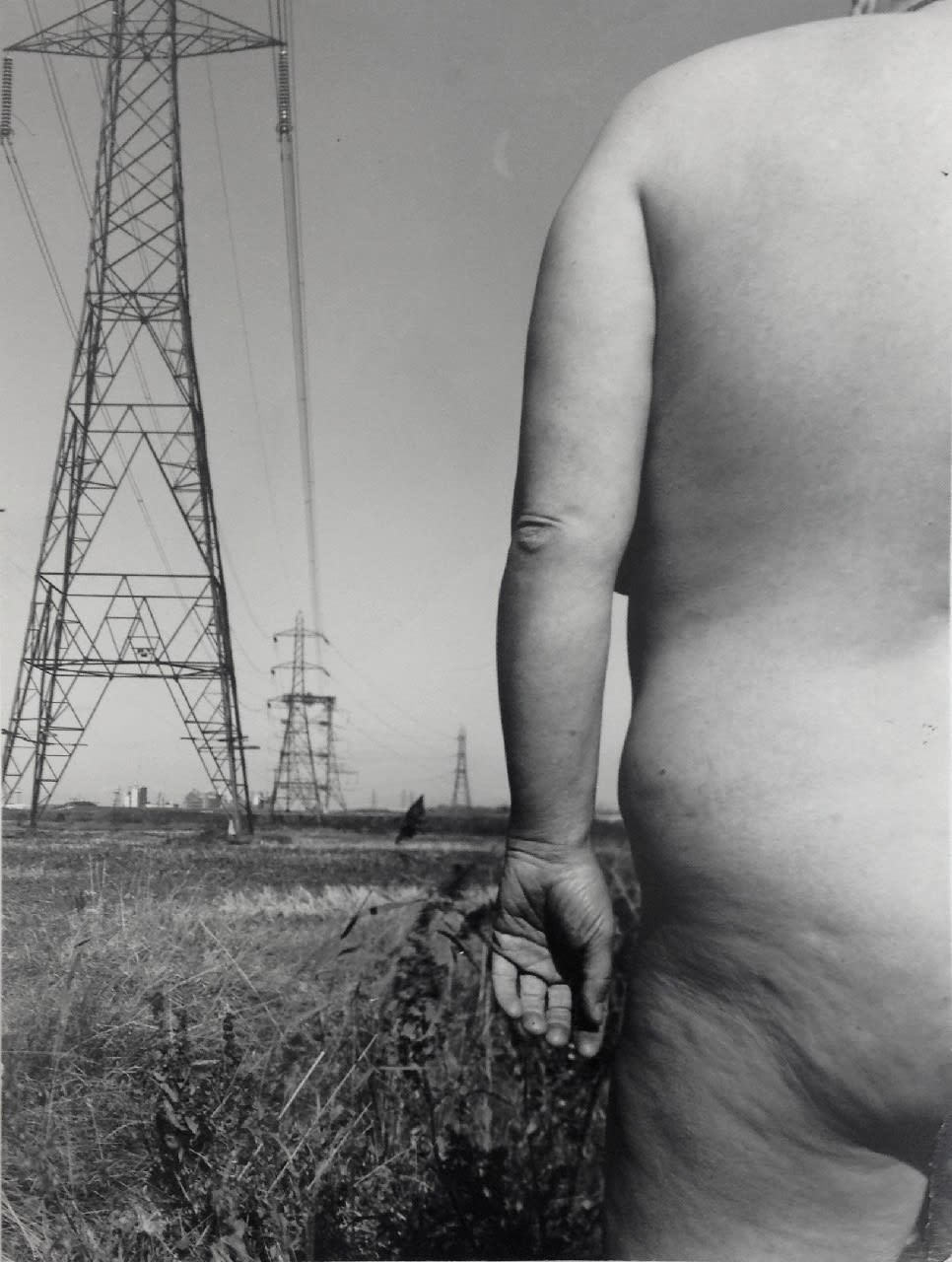Jo Spence
Remodelling Photo History (Industrialization), 1982
Vintage Gelatin Silver Print
Series: 2. The History Lesson: Self as Image, Also Known as Remodelling Photo History (1982-83)
10379
Provenance
Jo Spence Memorial ArchiveRichard Saltoun Gallery, London
Exhibitions
A Green and Pleasant Land: Landscape and the imagination, 1970-now, Towner Art Gallery, Eastbourne, 2017-18 (This print)Jo Spence : from Fairy Tales to Phototherapy. Photographs from the Hyman Collection, Arnolfini Bristol, (18th May 2020 - 20th June 2021) (this print)
'The 80s: Photographing Britain' at Tate Britain: 21 November 2024 - 5 May 2025
Literature
Jo Spence, Putting myself in the picture: A political, personal, and photographic autobiography, 1986, p.123.
Jo Spence. Collaboration with Terry Dennett. Stamped Photography Workshop and annotated verso When the Victoria and Albert Museum acquired a print of this work in 1990, Spence and Dennet explained...
Jo Spence. Collaboration with Terry Dennett.
Stamped Photography Workshop and annotated verso
When the Victoria and Albert Museum acquired a print of this work in 1990, Spence and Dennet explained its origins: "This photo work is an exploration of our attempts to work through ways of 'making strange' the everyday, normalized, institutional practices and codes of photography: re-ordered, re-modelled, re-invented, so that their commonsense meanings become disrupted. We are not trying to show familiar objects in unfamiliar ways, but rather to denaturalize the genres of photography which already consist of fully coded visual signs. Much of our thinking on this has been influenced by reading and seeing the work of Brecht, and by the writings of Augusto Boal in THEATRE OF THE OPPRESSED (Published by Pluto Press, 1979). What we finally hit upon as a working method was a form of photo-theatre. Here we could use non naturalistic modes of representation which allowed us to stage and create a kind of hybrid 'spectacle' whilst drawing upon and disrupting well known genres of photography which have been concerned with the representation of aspects of the female body. In order to do this we have used ourselves both as social actors and as photographers because we wanted to problematize and re-work the model/photographer relationship which is generally so one-sided."
British Photography / The Hyman Collection
Stamped Photography Workshop and annotated verso
When the Victoria and Albert Museum acquired a print of this work in 1990, Spence and Dennet explained its origins: "This photo work is an exploration of our attempts to work through ways of 'making strange' the everyday, normalized, institutional practices and codes of photography: re-ordered, re-modelled, re-invented, so that their commonsense meanings become disrupted. We are not trying to show familiar objects in unfamiliar ways, but rather to denaturalize the genres of photography which already consist of fully coded visual signs. Much of our thinking on this has been influenced by reading and seeing the work of Brecht, and by the writings of Augusto Boal in THEATRE OF THE OPPRESSED (Published by Pluto Press, 1979). What we finally hit upon as a working method was a form of photo-theatre. Here we could use non naturalistic modes of representation which allowed us to stage and create a kind of hybrid 'spectacle' whilst drawing upon and disrupting well known genres of photography which have been concerned with the representation of aspects of the female body. In order to do this we have used ourselves both as social actors and as photographers because we wanted to problematize and re-work the model/photographer relationship which is generally so one-sided."
British Photography / The Hyman Collection
